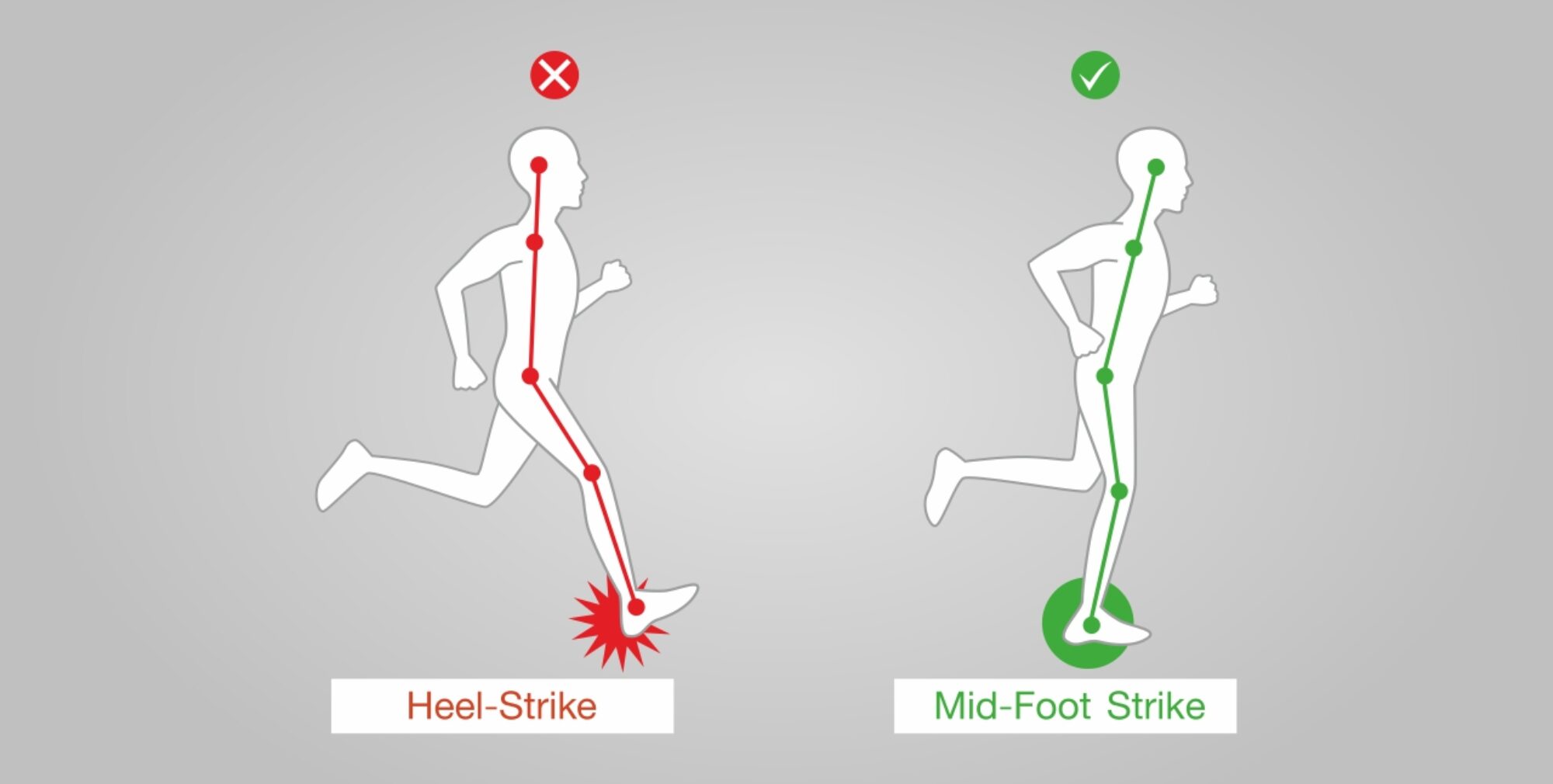The foot is a complex and intricate structure that plays a vital role in running. It provides a stable base of support, absorbs impact, and propels the body forward. Understanding the biomechanics of the foot while running can help runners improve their performance and reduce the risk of injury.
The gait cycle
The gait cycle is the sequence of events that occurs when one foot takes a step and then the other. It can be divided into two phases: stance phase and swing phase.
Stance phase
The stance phase begins when the heel strikes the ground and ends when the toes leave the ground. It can be further subdivided into three stages:
- Initial contact: This is when the heel first touches the ground. The foot rolls inward (pronation) to absorb the impact and disperse the force throughout the foot and leg.
- Midstance: This is when the foot is flat on the ground. The arches of the foot support the body weight and the foot begins to roll outward (supination) to prepare for push-off.
- Push-off: This is when the toes leave the ground. The foot is fully supinated and the calf muscles are activated to propel the body forward.

Swing phase
The swing phase begins when the toes leave the ground and ends when the heel strikes the ground again. During the swing phase, the foot is not in contact with the ground and is free to swing forward.
Foot biomechanics during running
The foot undergoes a number of complex movements during the running gait cycle. These movements can be divided into three main categories:
- Pronation: Pronation is the inward rolling of the foot. It occurs during initial contact to help absorb the impact of landing.
- Supination: Supination is the outward rolling of the foot. It occurs during midstance to prepare for push-off.
- Arch flattening: The arches of the foot flatten during midstance to support the body weight.

Common foot injuries
Common foot injuries in runners include:
- Shin splints: Shin splints are pain along the inner edge of the shinbone. They are caused by overuse of the muscles and tendons in the shin.
- Stress fractures: Stress fractures are small cracks in the bones of the foot caused by repetitive stress.
- Plantar fasciitis: Plantar fasciitis is inflammation of the plantar fascia, a thick band of tissue that runs along the bottom of the foot.
- Achilles tendinitis: Achilles tendinitis is inflammation of the Achilles tendon, which connects the calf muscles to the heel bone.
Tips for improving foot biomechanics and reducing the risk of injury
There are a number of things runners can do to improve their foot biomechanics and reduce the risk of injury, including:
- Wear properly fitting running shoes: Running shoes should fit snugly but comfortably. They should also provide good arch support and cushioning.
- Run with a midfoot strike: A midfoot strike is when the foot lands on the ground midfoot first, rather than the heel or forefoot. A midfoot strike can help reduce the impact on the joints and improve running efficiency.
- Strengthen your foot and ankle muscles: Strong foot and ankle muscles can help support the foot and reduce the risk of injury. There are a number of exercises that can be done to strengthen these muscles, such as short foot exercises, calf raises, and ankle rolls.
- Warm up before running: A good warm-up can help prepare the body for running and reduce the risk of injury. A warm-up should include dynamic stretches, such as arm circles and leg swings, as well as some light running.
- Cool down after running: A cool-down can help the body recover from running and reduce the risk of injury. A cool-down should include static stretches, such as holding a hamstring stretch or calf stretch for 30 seconds.
If you are experiencing any pain in your feet or ankles while running, it is important to see a doctor or physical therapist to get a diagnosis and treatment plan.

